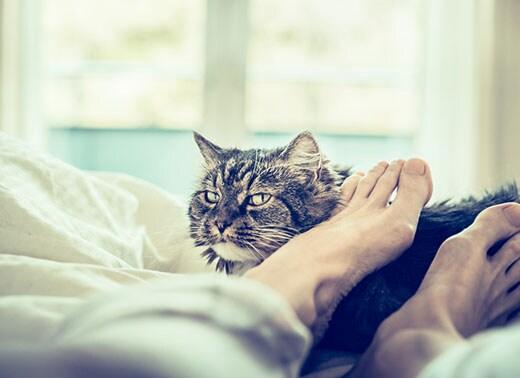
-
Find the right food for your petTake this quiz to see which food may be the best for your furry friend.Find the right food for your petTake this quiz to see which food may be the best for your furry friend.Featured products
 Perfect Digestion Large Breed Puppy Food
Perfect Digestion Large Breed Puppy FoodPrecisely balanced nutrition with Hill's ActivBiome+ prebiotic blend actively contributes to supporting digestive health and overall well-being to help your pet feel their best
Shop Now Perfect Digestion Small & Mini Adult Dog Food
Perfect Digestion Small & Mini Adult Dog FoodHill's Science Plan Perfect Digestion Small & Mini Breed Adult Dog Food with Chicken & Brown Rice supports ultimate digestive well-being & a healthy microbiome.
Shop Now Small & Mini Mature Adult 7+ Dog Food
Small & Mini Mature Adult 7+ Dog FoodHill's Science Plan Small & Mini Breed Mature Adult Dog Food with Chicken is a complete pet food, specially formulated with ActivBiome+ Multi-Benefit Technology.
Tailored nutrition to support graceful ageing in small dogs. Specially made with a synergistic blend of nutrients for energy & vigor.Shop NowFeatured products Hairball & Perfect Coat Adult Cat Food
Hairball & Perfect Coat Adult Cat FoodHill's Science Plan HAIRBALL & PERFECT COAT Adult cat food with Chicken is specially formulated to effectively help avoid hairball formation in adult cats while promoting a beautiful coat. Thanks to its mix of essential Omega-6 fatty acids, this food benefits the cat's skin and fur keeping them healthy and shiny. Our Advanced Fibre Technology helps reduce hairballs by naturally promoting their passage through the gut. This food is formulated with high-quality protein for a perfectly balanced, great-tasting recipe.
Shop Now Hypoallergenic Dry Cat Food
Hypoallergenic Dry Cat FoodHILL'S SCIENCE PLAN Hypoallergenic Adult cat food with egg & insect protein is a complete pet food for adult cat 1–6 years old. It's formulated for cats with delicate skin and stomach, with limited high quality novel protein sources & no grain.
Shop Now Kitten Food
Kitten FoodTender chicken chunks in gravy for kittens, with omega-3s for healthy eye & brain development and high-quality protein to support muscle growth. With balanced minerals to promote strong bones & teeth.
Shop Now -
Dog
- Dog Tips & Articles
-
Health Category
- Weight
- Food & Environmental Sensitivities
- Urinary
- Digestive
- Joint
- Kidney
-
Life Stage
- Puppy Nutrition
- Adult Nutrition
- Senior Nutrition
Cat- Cat Tips & Articles
-
Health Category
- Weight
- Skin & Food Sensitivities
- Urinary
- Digestive
- Kidney
-
Life Stage
- Kitten Nutrition
- Adult Nutrition
Featured articles Understanding Your Pet's Microbiome
Understanding Your Pet's MicrobiomeLearn what a pet's microbiome is, how it contributes to your pet's gut & overall health, and why nutrition is important in maintaining healthy microbiomes.
Read More The Right Diet For Your Pet
The Right Diet For Your PetLearn what to look for in healthy pet food & nutrition, including ingredients, quality of the manufacturer, your pet's age, and any special needs they have
Read More Pet Food Storage Tips
Pet Food Storage TipsWhere you store your cat and dog food can make a big difference in the quality and freshness once it is opened. Here are some common questions and recommendations for optimal storage for all of Hill’s dry and canned cat and dog food.
Read More -


Cat parents know the routine: You've just settled down to rest when suddenly, your cat pounces on top of your feet. And don't even think about moving your toes — your feline friend is a stealthy hunter and will jump on those, too.
Why do cats attack feet? And why do cats like feet so much, anyway? If you've ever lay motionless in bed hoping to avoid a foot ambush, these questions probably have crossed your mind.
Why Feet?
It all comes down to instinct. Why do cats attack feet so often? As Cat Health noted, "Cats chase things because it's innate behaviour. They're predators, so it's second nature for them to chase things. For some cats, that drive is so strong that your moving feet will trigger it." When your kitty sees your feet moving around under the bed covers, their instincts are on high alert: Attack!
Why do cats like feet in particular? Human feet happen to be the perfect shape and size for their preferred prey. "As cats hunt alone their prey is small in size as this is all they are capable of catching on their own," explained International Cat Care. Beware if you wear big, fuzzy slippers or socks that look conspicuously like small mammals, as this may encourage pouncing.


Tasty Tips
When Cats Attack Your Feet
Cats are quirky, sometimes complicated creatures that capture the hearts of so many pet parents. They also are very persistent and when cats want your attention, they won't stop until they get it, including jumping at your feet and ankles. Usually, this happens when you're sleeping or trying to work.
Typically, your feline friend swats at your feet because they want food or a snuggle session, or perhaps are acting out aggression. But more often than not, they do it because they want to play. A cat who's looking for a playmate doesn't exhibit hostile or fearful behaviour — quite the opposite, in fact.
 "The cat does not exhibit dominance posturing toward the victim, and does not retreat from or avoid the victim with characteristic signs of fear," explained the RSPCA Australia. "In fact, the cat often hides behind some furniture and waits until a person walks by, and then dashes out and attacks the person's ankles." Sound familiar? Kittens, in particular, are notorious for such behaviour and will lunge at your feet, even if you're just walking across the room minding your own business.
"The cat does not exhibit dominance posturing toward the victim, and does not retreat from or avoid the victim with characteristic signs of fear," explained the RSPCA Australia. "In fact, the cat often hides behind some furniture and waits until a person walks by, and then dashes out and attacks the person's ankles." Sound familiar? Kittens, in particular, are notorious for such behaviour and will lunge at your feet, even if you're just walking across the room minding your own business.
Feline Aggression
Sometimes, cats can become overzealous during playtime and take it to the next level, such as biting or scratching that breaks the skin. You'll recognize cat aggression when you see it. In addition to biting, an aggressive cat will display one or more of the following behaviours:
- Growling
- Hissing
- Exposed claws
- Open mouth
- Stiffened stance
- Arched back
Aggression is often the result of roughhousing gone wild, hostility caused by an outside factor such as an illness, or defending territory against a new pet in the family. Why do cats like feet when it comes to acting out aggression? Feet are easily accessible and mimic the movements of an animal.
To calm an aggressive cat, avoid roughhousing and redirect their attention. "A cat that habitually chases a person's feet is distracted (redirected) when a toy is waved in its face so the cat plays with the toy instead of focusing on the person's feet," said the American Animal Hospital Association. Invest in some soft, squishy toys that will make your feet less desirable as chew toys.
When to Call the Vet
Contact your veterinarian to discuss any worries that you have about your cat's aggressive behaviour — the sooner the better, advised the American Association of Feline Practitioners. The vet will ask you questions about other behaviours, including destructive habits like scratching furniture, so jot down a list of concerns, including the question, of why cats attack feet. Together, you and your vet can address your cat's erratic behaviour.
Understanding your cat's body language and knowing which behaviours are normal (and which are not) are two important tools that will lead to more positive interactions with your cat. With a little time and a little patience, your feet will be safe and sound.


Christine O'Brien is a writer, mom, and long-time cat parent whose two Russian Blues rule the house. Her work also appears in Care.com, What to Expect, and Fit Pregnancy, where she writes about pets, pregnancy, and family life. Find and follow her on Instagram and Twitter @brovelliobrien.
Related products

HILL'S SCIENCE PLAN Hypoallergenic Adult cat food with egg & insect protein is a complete pet food for adult cat 1–6 years old. It's formulated for cats with delicate skin and stomach, with limited high quality novel protein sources & no grain.

Hill's Science Plan HAIRBALL & PERFECT COAT Adult cat food with Chicken is specially formulated to effectively help avoid hairball formation in adult cats while promoting a beautiful coat. Thanks to its mix of essential Omega-6 fatty acids, this food benefits the cat's skin and fur keeping them healthy and shiny. Our Advanced Fibre Technology helps reduce hairballs by naturally promoting their passage through the gut. This food is formulated with high-quality protein for a perfectly balanced, great-tasting recipe.

Hill's Science Plan Adult Cat Food with Chicken is a complete pet food, specially formulated with ActivBiome+ Multi-Benefit Technology.
This food is specially formulated to fuel the energy needs of cats during the prime of their life.

Tender chicken chunks in gravy for kittens, with omega-3s for healthy eye & brain development and high-quality protein to support muscle growth. With balanced minerals to promote strong bones & teeth.
Related articles

Discover what you can do to spot and support a sensitive cat stomach. See what routines and food you can implement to help your cat be happy and healthy.

Find out about how you can support your cat's digestion to boost overall health. Diet is key to a long and happy life for your cat, so discover what you can do.

When learning how to train your cat, you'll start with very basic first steps that both reward good behavior and discourage the bad.

While it might be nearly impossible to separate your cat from your Christmas tree, learn ways you can combat her curiosity and keep her out of harm's way.

Put your cat on a diet without them knowing
Our low calorie formula helps you control your cat's weight. It's packed with high-quality protein for building lean muscles, and made with purposeful ingredients for a flavorful, nutritious meal. Clinically proven antioxidants, Vitamin C+E, help promote a healthy immune system.
Put your cat on a diet without them knowing
Our low calorie formula helps you control your cat's weight. It's packed with high-quality protein for building lean muscles, and made with purposeful ingredients for a flavorful, nutritious meal. Clinically proven antioxidants, Vitamin C+E, help promote a healthy immune system.

